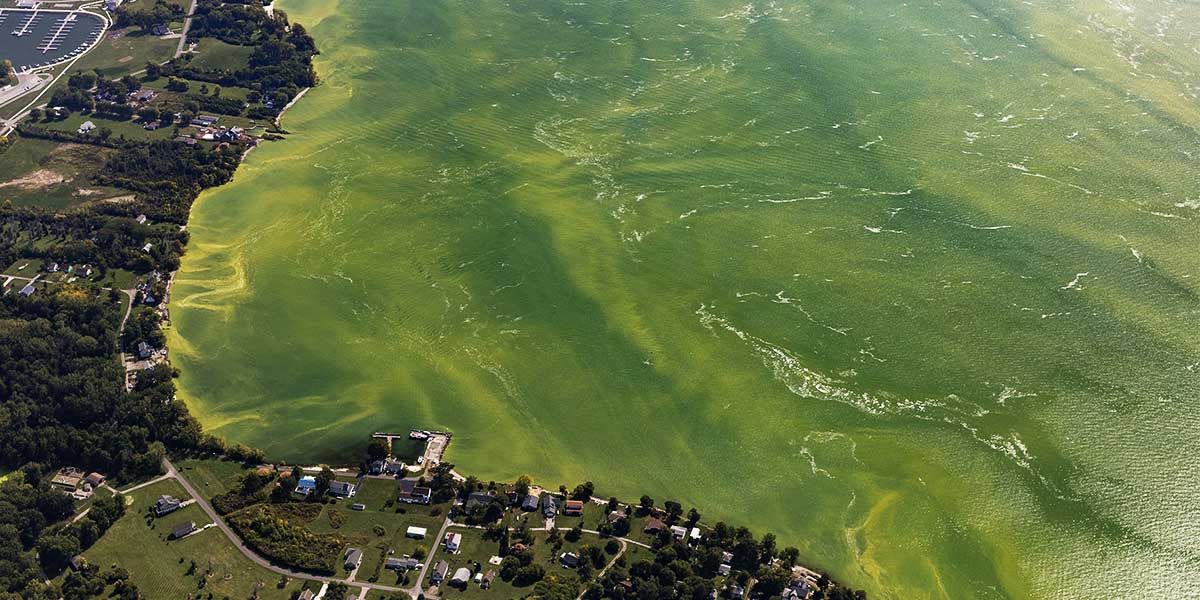Predictions about algae blooms in Lake Erie made earlier suggested that they wouldn’t be too severe, with a potential severity range of 2.5 to 4 on a scale of 1 to 10. However, a recent report has revealed that the situation is more serious than initially expected.
Previous outlook
Lake Erie experiences harmful algal blooms (HABs) primarily composed of cyanobacteria, often referred to as blue-green algae. These blooms have the ability to produce a toxin called microcystin. When these blooms occur, it can lead to cities and local governments having to treat drinking water, close down beaches, and negatively impact local economies by discouraging recreational activities.
The severity of Lake Erie’s algal blooms is measured on a scale from 1 to 10 by the NOAA Ecological Forecasting initiative. This index is based on the amount of algae present (biomass) during the peak 30 days of the bloom. An index score above 5 indicates more severe blooms. Blooms with a score over 7 are considered particularly severe, leading to the formation of extensive scum and widespread coverage on the lake. The most severe blooms occurred in 2011 and 2015, with index scores of 10 and 10.5, respectively.
As of last June, this year’s bloom was initially expected to score a 3 on the severity index, with a potential range of 2 to 4.5. In comparison, the previous year’s bloom scored a 6.8. It’s important to note that the size of a bloom does not necessarily correlate with its toxicity. A large bloom may not have as concentrated toxins as a smaller one. Each algal bloom is unique in terms of its size, toxicity, and overall impact on local communities.
Higher severity than expected
A recent “seasonal assessment” released on November 2 by the National Centers for Coastal Ocean Science revealed that this year’s bloom actually scored a 5.3 on the severity index, categorizing it as moderately severe. While this is lower than the 6.8 score recorded for the 2022 bloom, it is still larger than what scientists had anticipated. Severity is determined by estimating the biomass of the bloom and the area it covers, as observed in satellite photos.
The 2023 bloom covered an area of 312 square miles, compared to 416 square miles in the previous year. It reached its peak in mid-August and was mainly concentrated along the U.S. coast, stretching from Monroe, Michigan, to Port Clinton in Ohio.
Multiple factors at play
Dr. Richard Stumpf, an oceanographer from the National Oceanic and Atmospheric Administration (NOAA), explained through an email conversation with the Sandusky Register that the increased severity is the result of a combination of factors. One significant factor is the early onset of the blooms, among other influences.
Starting earlier in the year may allow the blooms to more effectively utilize the phosphorus present in the water. Smaller blooms tend not to utilize all the phosphorus supplied by the Maumee River.
Another contributing factor is the timing of the peak bloom, which now tends to occur in August instead of around Labor Day, as it did in the past. This prolonged peak period, which Dr. Stumpf refers to as a ‘plateau,’ instead of a ‘peak,’ contributes to the severity.
Dr. Stumpf is also exploring the possible connection between these conditions and climate change, examining whether late spring water temperatures play a role. He stated, “We are investigating the timing of the spring bloom, including diatoms and other ‘good’ algae, to see if there have been any changes, as they compete with harmful algae.”
